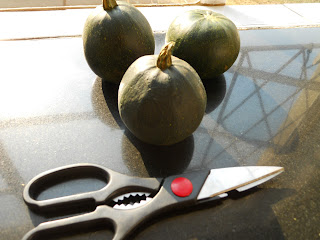As a ten-year anniversary present to Cheri, I sent myself
off for a five-day excursion into the wilds of the country, leaving Cheri and
Jonas behind to fend with increasingly long power cuts, a faulty home security system,
and a short supply of groceries, half a roll of toilet paper, and cash that had to last us three more weeks
until payday. (You’re welcome, Honey!) But since you’re more likely to want to hear
about my week out and about than Cheri and Jonas’ week in (although they did
have plenty of fun, too), here’s a rundown of what I got to experience.
Five high school teachers and 40 tenth-grade students
boarded up onto three tour buses Monday morning at 8:30. We were told to expect a four hour trip to
our destination, with a bathroom break halfway through. Thinking that this short trip wouldn’t be too
much trouble, and having my iTunes and headphones to drown out much of the
noise, I unwisely chose to board the bus that had ten girls and no boys on
board. Seven hours later (including two drained
laptop batteries, twelve Justin Bieber albums sung by my fellow bus-mates at
the top of their lungs, two fights about which girl was being the most annoying
by screaming too loudly, four police stops to verify the legality of our tour
bus, and three very costly wrong turns on deserted logging roads), we finally
got off the bus at our destination and I kissed the first adult I saw. (His name is John, and this action is illegal
in my host country.) Our trip wasn’t so
bad until the last few hours (three hours to travel the final 19 kilometers on
dirt roads). In fact, the first few
hours were quite lovely. Here are some
pictures of the landscape, including some of the misnomered Halfway House where
we stopped two hours into our journey.




one of the few stores
we encountered outside of the cities
what my now vast
experience tells me is a typical family farm
some of the freely
roaming cattle—these were nice and weren’t blocking the road
technology!
Halfway House—an old
farmstead now turned into a quaint shopping center
one of a number of
antique tractors on display at Halfway House
Aside from overly excited, screaming teenage girls, the trip
was quite lovely. It was fascinating to
see the countryside that lay beyond the city limits that had confined my
experiences up until that point. Take my
word that these pictures do not do justice to the views. You’ll have to come and visit to see for
yourself!
Once we arrived to our destination—
Far and Wide Adventures, the students
were shown to their cabins, and the teachers were shown to ours.
While the students had to rough it in
sleeping bags on bunks, the teachers split two chalets.
I shared with two other guys.
We had a two-story chalet with a kitchen,
living space, two full bathrooms, a sauna, a fireplace, and a second-story
balcony that overlooked the forested valley below.
We each had our own bed with plenty of comfy
pillows and heavy down comforters, and the staff would clean up after us and
light a fire each afternoon while we were away with the kids.
We didn’t want to leave our lodging, but when
we did, we spent the hiking through the forest, camping overnight on a cliff’s
edge (~760 meters fall down to the valley floor), and watching the kids
negotiate a high ropes course (emphasis on “high”—some parts were over 50
meters high in the eucalyptus trees!).
On the last day, the three male teachers teamed up to compete against seven
other teams of students in an orienteering competition.
Lionel (40) entered with a torn meniscus,
John (36) was an overweight Scott, and I’m still carrying my sympathy weight
from Cheri’s pregnancy three years ago.
We had originally convinced our two female teachers to join in, but the
14 kilometer course convinced them that the sauna sounded better.
(To their credit, we had just hiked 12
kilometers that morning to see the water falls, so the sauna did sound rather
nice.)
We kept running into one student
group that we thought we were in stiff competition with, and we more than once
nearly killed ourselves running up a steep, rocky incline to stay ahead of
them.
But when we finished the course
and found out that we were first, we were surprised that our time of two hours
and twenty minutes was the best.
We
waited for other teams, but eventually gave up and showered.
We got out of the shower and went back to the
finish line to see the second place team finish 40 minutes after we had.
Not bad for three badly out of shape men!
Here are some photos of our time and the landscape at Far and
Wide:
main dining hall
looking from the
dining hall onto the student cabins (left) and teacher cabins (right), with a
fire lit in ours if you look carefully
part of the
high-ropes course
the aforementioned
760 meter cliff face
Mutarazi Falls—either
the first or second tallest falls in Zimbabwe
a monkey—I swear
getting ready to swim
at the top of the falls
















































